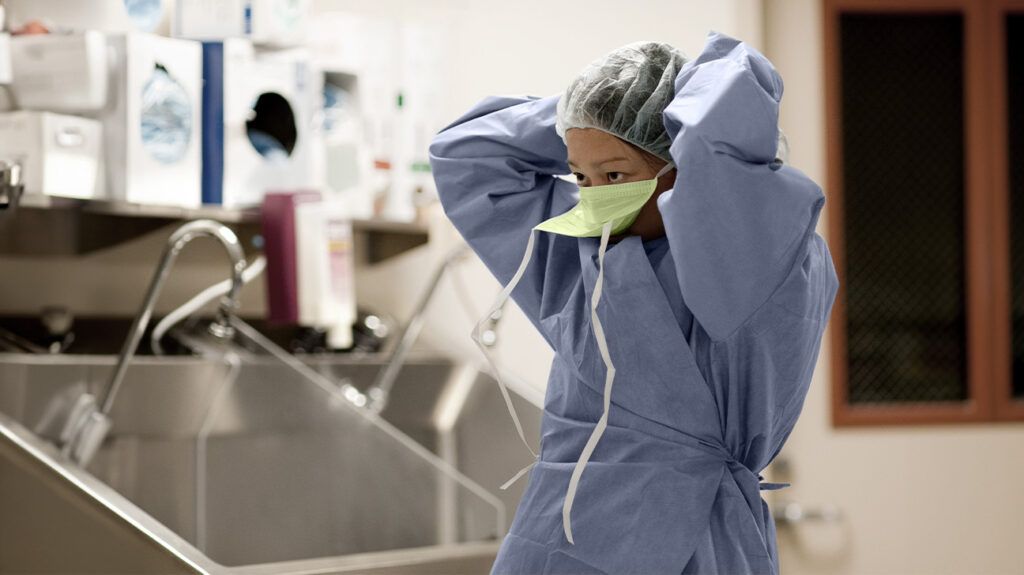Doctors may recommend surgery to correct osteochondritis dissecans when other treatment methods are unsuitable, if a person has a larger lesion, or when detachment occurs.
Osteochondritis dissecans affects the joints. It happens when a small section of bone separates from the surrounding areas, leading to loosening and breaking of the small piece of bone and cartilage covering it.
Several nonsurgical treatments may help some cases of osteochondritis dissecans. However, a doctor may consider surgery if these therapies are ineffective or in more severe cases of osteochondritis dissecans.
Read on to learn more about when someone may need surgery for osteochondritis dissecans, what to expect during recovery, the success rates of surgery, and more.

Not everyone who develops osteochondritis dissecans will require surgery.
Doctors may recommend surgical correction in the following cases:
- nonsurgical therapies do not produce results after 2–4 months of rest and treatment
- the lesion is larger than 1 centimeter in diameter.
- the lesion becomes detached or separated from the surrounding area and moves around in the joint
Any joint that osteochondritis dissecans affects may require surgery. The knee is the most common joint that requires advanced care, accounting for around
Several surgical options exist for treating osteochondritis dissecans. They
- drilling, which creates pathways for blood vessels to develop and provide nourishment to the area, aiding healing and recovery
- fixation, which uses pins, screws, or other materials to hold the lesion in place
- cartilage grafting, which involves adding a new piece of cartilage and bone to allow the growth of new healthy bone and cartilage in the damaged area
In most cases, a surgeon will perform the procedure arthroscopically. This means they will insert tools and a camera into a small incision they make in the adjacent area.
In cases of older individuals, those with advanced joint diseases, or in cases where lesions are very large, a surgeon may recommend total or partial knee replacement surgeries.
A person can discuss preparation for the surgery with the performing surgeon or medical team. They can provide specific instructions on:
- what to expect on the day of the procedure
- when they may need to stop taking food and drinks
- what medications they can safely take beforehand
They can also provide more information on what to expect during and immediately after the procedure. This might include making sure a person has somebody to give them a ride home after the procedure.
Although times may vary, a person will typically require crutches for the first 6–12 weeks after surgery if the affected joint is weight bearing, such as the knee.
They will also typically require 2–4 months of physical therapy.
If they have no complications or issues, many can return to sports or physical activities in about 4–5 months.
A surgeon can provide a more accurate estimate of how long it will take for a person to heal.
Recovery rate ranges greatly between
Results can also vary between procedures. The success rates include:
- Drilling: 92–100% healing and symptom relief
- Fixation with metallic screws: 84–100% healing success rate
- Fixation with bioabsorbable implants: about 90% healing success rate
- Grafting: about 72% “good to excellent” recovery
Surgery on lesions in weight bearing areas is typically not as effective as surgery on lesions in other areas.
Children or adults experiencing pain in the joint will typically require a review of medical history, including what symptoms the person has, and a physical examination. During the examination, a doctor will look at the affected joint.
They may also order an X-ray, MRI, or ultrasound to get a better view of the joint. This can help them determine if surgical treatment may be necessary right away.
Others may only require surgery if their symptoms do not go away within 2–4 months.
Conservative treatment for osteochondritis dissecans may involve one or more approaches.
A doctor may recommend observation and activity restriction for mild cases in children and young teenagers. The majority of osteochondritis dissecans lesions will heal on their own with this approach.
If symptoms show no sign of improvement with rest, a doctor may recommend assistive devices. This may include crutches, splinting, or casting the affected arm or leg.
Learn more about nonsurgical treatments for osteochondritis dissecans.
Osteochondritis dissecans does not always require surgery. In cases where the condition does not heal, affects a large area, or becomes detached, a doctor will likely recommend one of a few surgeries to correct it.
Surgeries can include drilling, fixation, and grafting. Each approach provides different success rates for the person.
Following a surgical procedure, individuals will typically require several weeks of recovery and rest and potentially using crutches. Some people will be able to return to sports and other physical activities.
